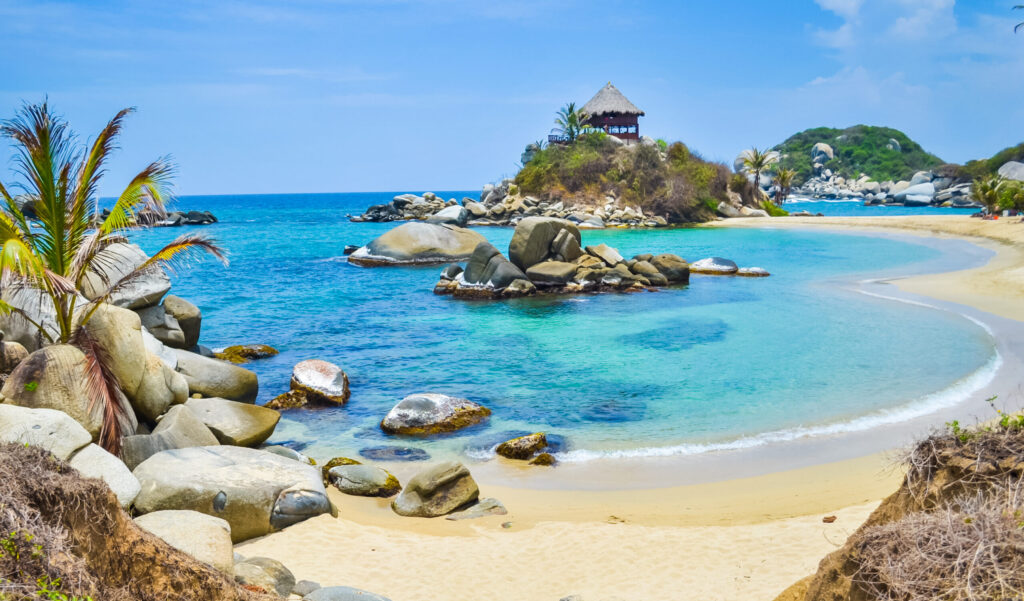Explore 3 Incredible Colombian National Parks in One Week
Travel journalist Paul J. Heney explores three uniquely different Colombian National Parks providing travel tips for hikers and outdoor enthusiasts. Find out how you can do it all in seven days!
Visitors to Colombia may be surprised by its incredible geographical diversity. The South American country may appear small on maps, especially next to its enormous neighbor, Brazil, but exploring it will take a lot longer than a weekend — or even a whole week. In fact, Colombia is about 1.7 times larger than the state of Texas, not to mention the fact that it boasts some 51 million residents. This is a country begging to be explored, over and over.
On a recent trip to this dynamic, varied country, my husband and I decided to focus on some of the natural delights offered by Colombia, taking in three very different national parks — one high in the Andes Mountain range, one a fascinating jungle on the Caribbean coast, and one that encompasses a series of tropical islands that are located a short boat ride from magical Cartagena.
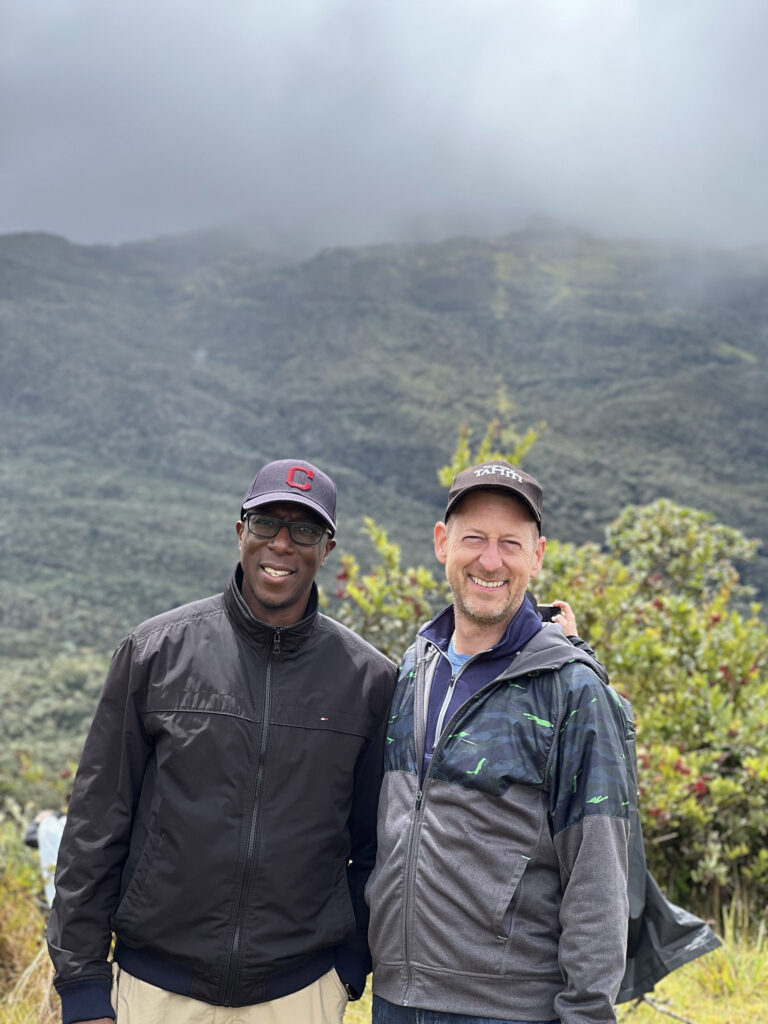
Getting High in the Andes
Located a couple of hours east of Bogota by car, Chingaza National Park is remote and not very easy to get to. Inside the park, you’ll find narrow, muddy, pockmarked roads, and several times, I recall thinking how glad I was not to be driving. That said, a visit to this pristine alpine world is well worth the trip if you’re visiting Colombia.
Visitors must surely plan ahead, as entrance to the park is quite limited, due to its fragility. Most of the trails in the park are limited to 40 visitors per day. Yes, you read that right — this is not Colombia’s Yellowstone by any means — it is very sparsely visited. In fact, our guide told us that she felt as though the 8 million residents of nearby Bogotá didn’t even really know about this Andean jewel.
Chingaza is both a cloud forest and a rainforest. Much of the park ranges from 10,000 to 16,000 feet in elevation, and its whole ecosystem is referred to as the Páramo. We did most of our hiking around 11,200 feet in elevation, which was quite taxing on our bodies — even my husband, who’s in his early forties and in excellent shape, was winded less than an hour into our mostly level hike. It’s important to drink a lot of water at elevations as high as this, even when you’re not exerting yourself. Some in our group also chose to bring altitude sickness pills, which can be obtained over the counter.
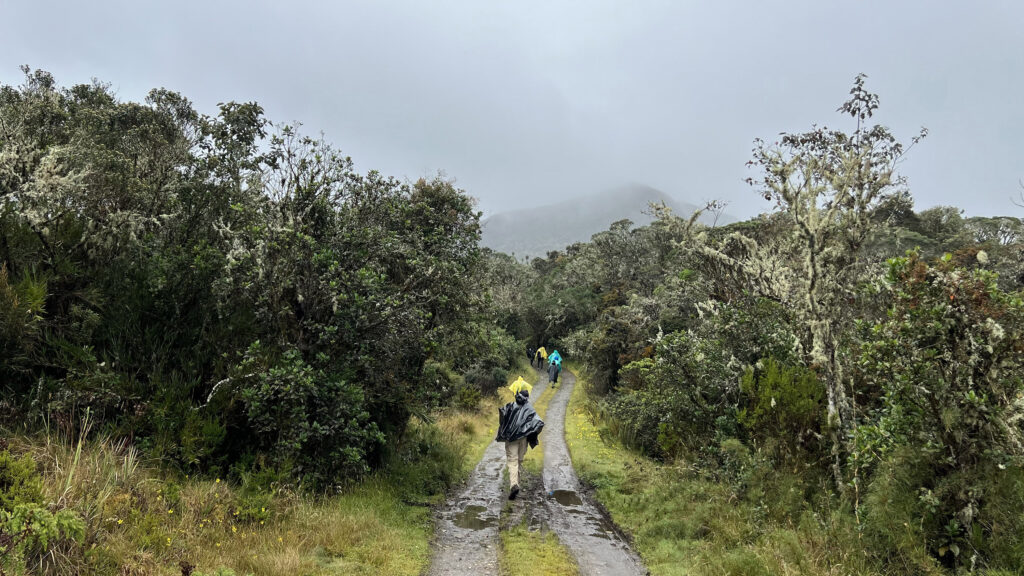
Chingaza plays a critical role in a lot of flora and fauna here. It is home to some 1,300 species of plants and 160 species of mammals including the Andean bear (also called the spectacled bear), as well as jaguars, ocelots, deer, puma, and mountain tapirs. You’ll also find an incredible 531 species of birds here, along with 40 types of reptiles and 45 different amphibians. The park is also quite critical to the residents of nearby Bogotá. Its near-constant precipitation provides the country’s capital city with pretty much all of its water – which is certainly no small matter.
We found the park to have an otherworldly, alien feel. Due to the on-and-off misty rain on the day that we visited, we donned rain pouches on top of our layered clothing. It was only about 50 degrees out and the elevation certainly trumps proximity to the equator here. There were spiky cactuses, lots of mosses, and bushes with white fungus all over them. While we didn’t see any wildlife, we saw plenty of evidence of spectacled bears along our hike. The bears love the local plant called puya; it’s part of the bromeliad family (think pineapples). When you see one of the plants with its white core all mangled or devoured, you know the bears have been here recently.
Low-hanging clouds took away most of our chances to see many dramatic vistas, but occasionally we were treated to a vague glimpse of distant mountains. That’s the norm here, and our guide even remarked that visiting Chingaza without the constant, misty rain simply wouldn’t be the same.
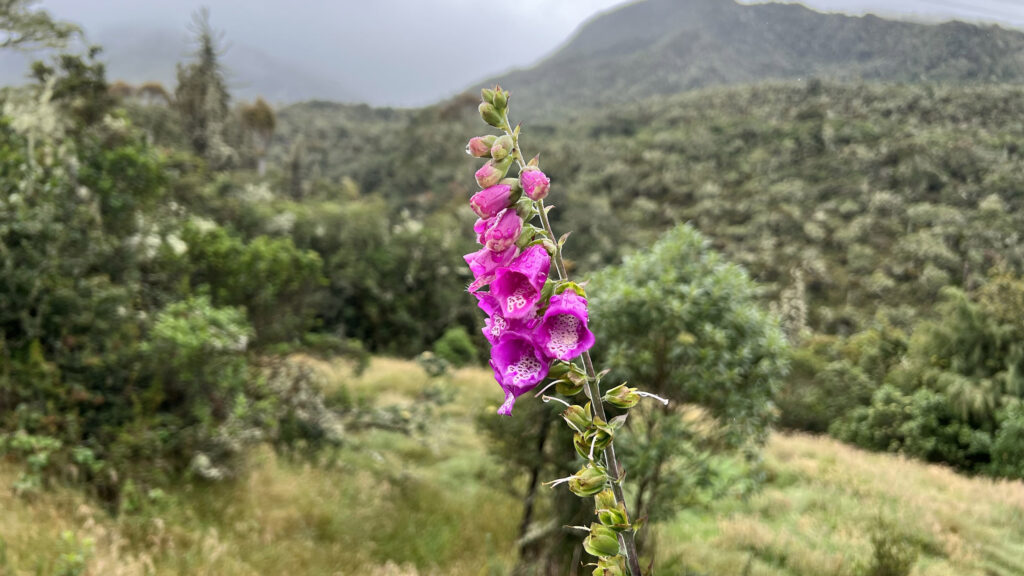
Venturing into the Jungle
Tayrona National Park, located just east of the city of Santa Marta on Colombia’s Caribbean coast, has been said to be one of the most important national parks in the entire world, due to its location and incredible biodiversity. Many visitors to the park stay overnight and camp, but due to limited time, we decided to simply do a single day on our own.
For a couple of dollars, we took a taxi from our apartment to Mercado Público de Santa Marta, a fun and bustling local shopping area. There, we boarded a regional shuttle bus that stops at two of the national park’s four main entrances. First up is Calabazo, but that entrance is a much further hike from many of the park’s main attractions. Stay on the bus to the El Zaíno entrance, a bit further and roughly an hour from Santa Marta. The bus fee was an extremely reasonable $3 each way (12,000 Colombian pesos.)
(Note: You can also take a taxi from your hotel directly to the El Zaíno entrance for about $25 each way and our taxi driver certainly tried to talk us into doing that. We decided $3 on an air-conditioned bus was a vastly better option than spending an hour in an extremely hot taxi with no air conditioning.)
The bus seated 31 people and was about half full during our trip to the park. The leather seats were comfortable enough and the air conditioning worked reasonably well. Don’t expect cellular service once you leave Santa Marta; so make sure that you’ve saved any park or trail information that you may need later in the day via screenshots.
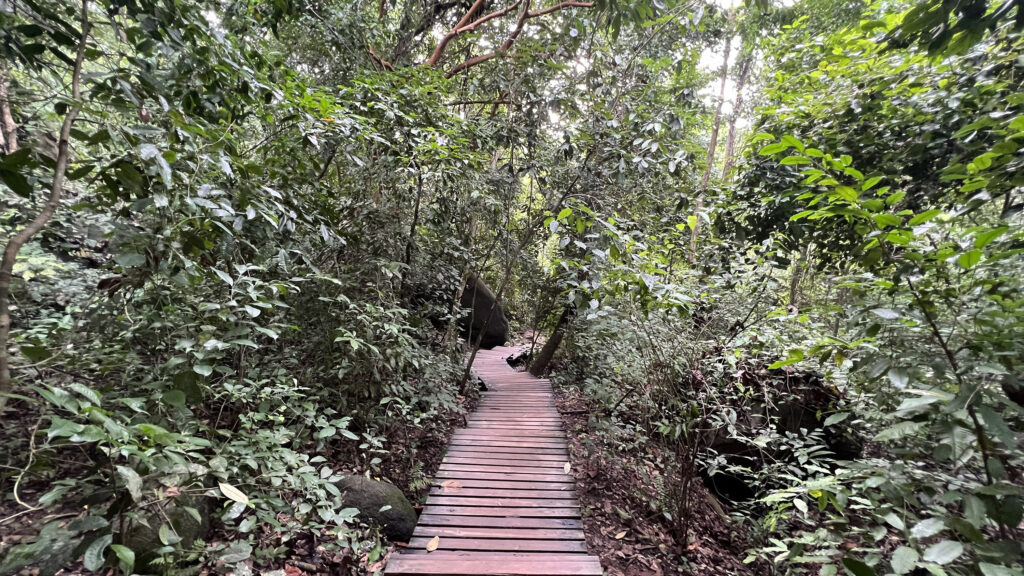
Once at the park, we paid our $14 entrance fees. It is more expensive in the high season and higher for foreigners, topping out at around $16, but still, what a bargain! There’s also mandatory insurance you must purchase (with cash) that runs about a dollar a day. Do this right outside the park’s main gate, or after purchasing your park admission, you’ll be asked to go back outside for the mandatory insurance.
Also note that there are certain two-week periods where the entire park is closed to the public, in deference to the indigenous peoples who live in the park. During times when they hold ceremonies of significance, you won’t be able to access Tayrona, so please research the upcoming blackout dates in advance of booking your trip. These dates vary a bit each year but are often around the months of February, June, and October.
Once inside the El Zaíno entrance, we waited for an optional park shuttle ($1.25 per person) that takes visitors deeper into the park, stopping just short of the Playa Cañaveral or Cañaveral Beach) area. I highly recommend taking the shuttle; otherwise, you will be walking along a fairly boring road for 30 minutes, when you could be spending that time and energy on better sights near the coast. Signs are plentiful to take you to Playa Cañaveral, but we found this beach too rough for swimming. Beyond that, it was deserted — not to mention it was strewn with bits of wood and detritus.
Make the effort to double back a bit to the west – on the other side of the large boulder-strewn hill – to go to La Piscinita, a smaller arc of sand that had a fair number of swimmers and sunbathers. There are a limited number of chairs, chaise lounges, and a half dozen tables with umbrellas — they are free but on a first come basis. When we arrived in the late morning, there were still several available, so we decided to spend some time here. The water was warm and clear, but we didn’t see any serious swimmers or snorkelers nearby.
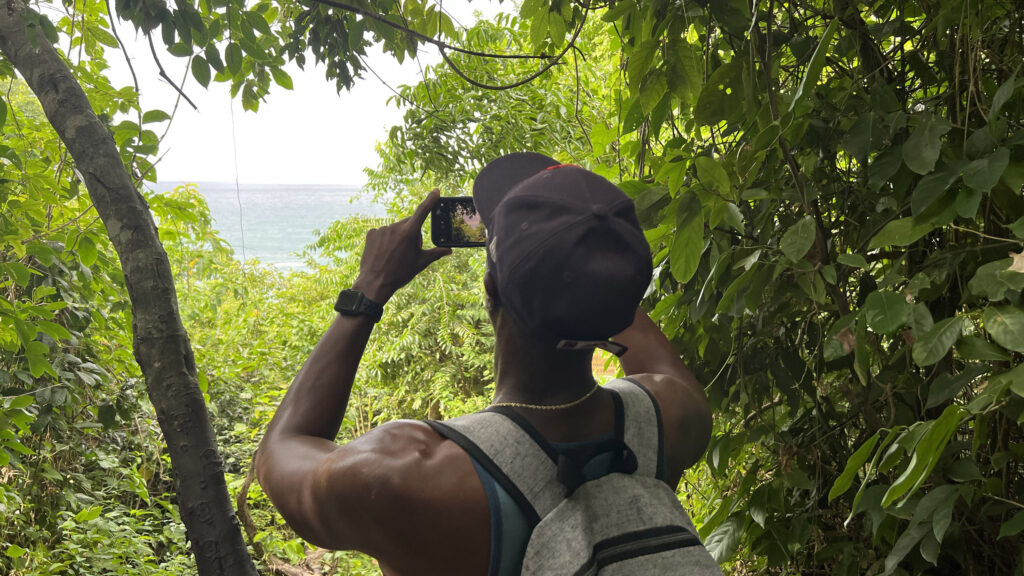
There are hotels here, as well, and a few restaurants, so we chose to have a small lunch after lounging in the shade and playing in the surf for an hour. We sampled the excellent red snapper and a pulled chicken sandwich — just enough to power us up for a hike through the jungle.
We headed westward toward the famous Arrecifes Beach, about a two-hour hike up and down through the hot jungle. We weren’t sure if we’d make the whole trek, but locals told us that the hike was one of the prettiest in the park. So, we figured we would hike until we felt like turning around. In the end, we ventured almost exactly a mile, to a stunning overlook of the beach, which was well worth the trip.
We saw a few animals along the way — different colors and sizes of lizards, as well as tropical frogs — but no monkeys or sloths. Based on a similar experience we had years earlier in Costa Rica, I do highly recommend hiring a guide, even for casual walks through this type of national park. They’ll find so many animals in their spotting scopes or binoculars that we tourists never would. We weren’t able to find a guide this time, due to a last-minute change in our timing, but we’ll make it more of a priority next time. You can also choose to book through a reputable firm like Baquianos, which does a boat trip around the best beaches of Tayrona. It includes lunch and a snack for about $75 per person.
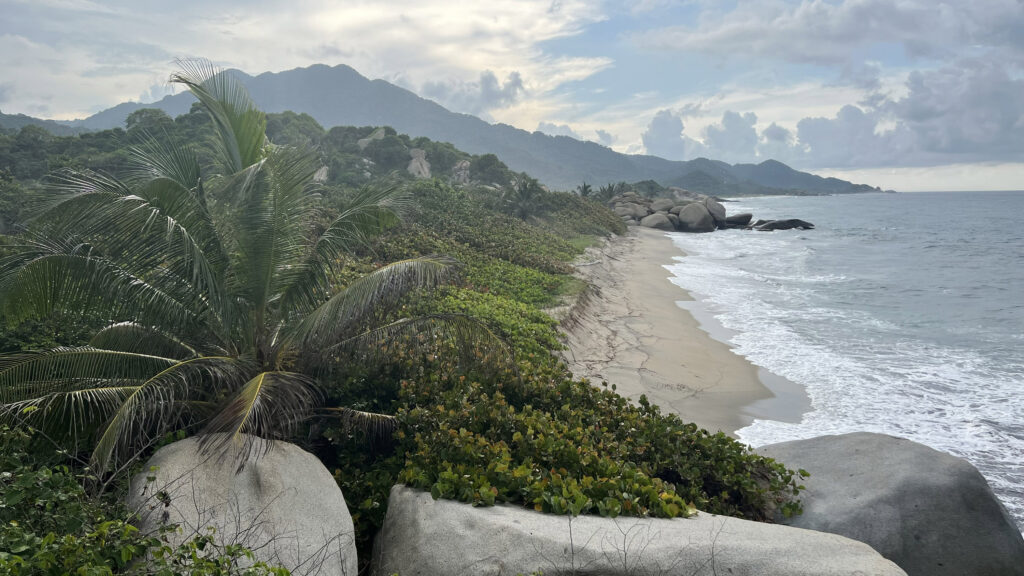
Off to the Islands
We experienced the last national park of our Colombian vacation during an enchanting trip from Cartagena to the Hotel San Pedro de Majagua, located on Isla Grande. Roughly one mile long and a half-mile wide, Isla Grande is the largest of the Rosario Islands. It’s also part of Colombia’s Islas del Rosario National Park, which encompasses some 28 islands, set amidst the crystal-clear Caribbean waters.
The Rosario Islands serve as an easy and popular day trip from Cartagena, and you’ll find international visitors exploring them, as well as locals who are simply getting away from the city. We met the hotel’s open-air (but covered) boat at 8 a.m. at the city’s busy dock area to take the one-hour trip to the islands. The boat ride itself was glorious, passing through Cartagena’s enormous bay, with fascinating views in every direction. You’ll glide by the Miami-like highrises of the city’s expansive Bocagrande & Laguito districts — and then past the imposing fortress walls of Fuerte de San Fernando de Bocachica, at one of the bay’s entrances.
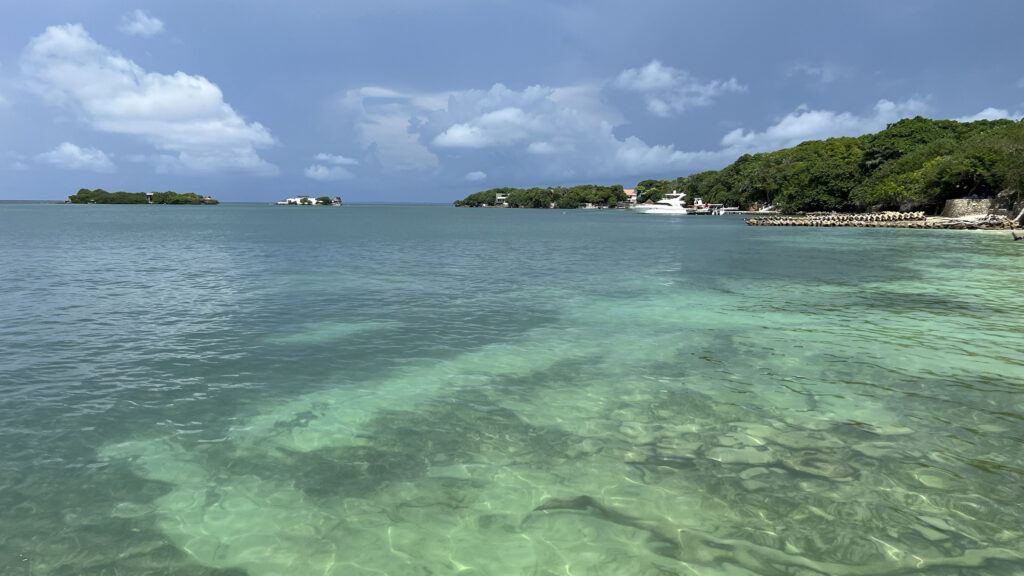
Once on Isla Grande, we had to figure out our day. The total price for the roundtrip boat ride, lunch, and a canoe ride around the island’s lagoon area, was $88. You can also add on other experiences once on the island, such as massages or a one-hour snorkeling trip.
In the end, we decided to skip the canoe ride and do some snorkeling instead. We were looking more for relaxation here. All equipment was provided, and I was happy to see that it was quality snorkel gear; I’ve had a lot of bad experiences around the world with low-quality snorkels and masks, but these fit perfectly. We chatted with a lovely couple visiting from Guatemala City on the short ride out to the reef, and then dove in, a guide expertly leading us around all sorts of coral, pointing out different varieties of underwater creatures. The water was clear and warm, the fish were numerous, and the whole experience was a delight. We saw several schools of thousands of tiny fish, and swimming through them as they magically parted for us was dreamlike.
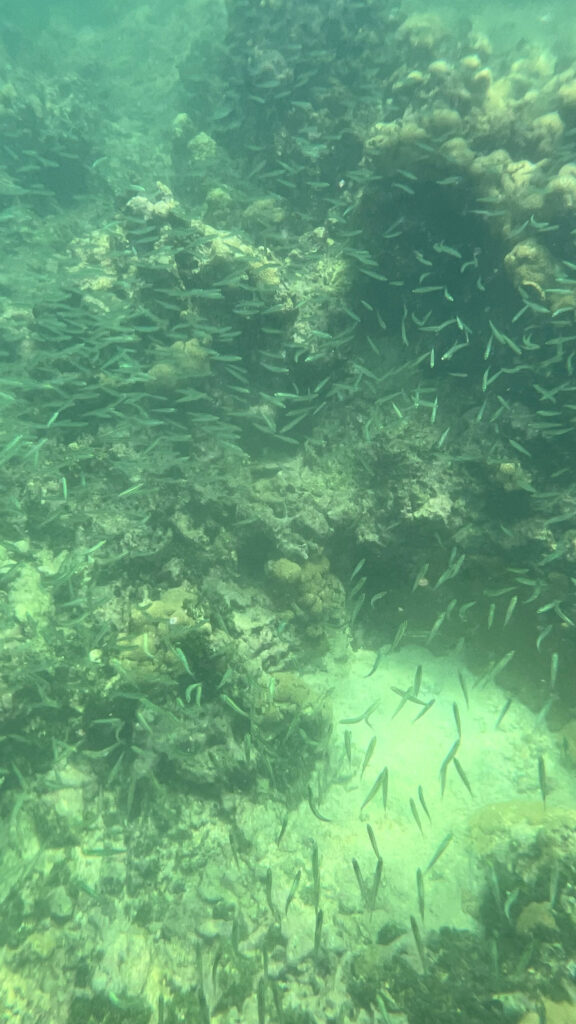
Back ashore, we wandered over to Hotel San Pedro de Majagua for lunch, which consisted of lobster and a delightful assortment of seafood. Everything was flavorful and fresh, and we couldn’t get over what a quality meal it was — we’d assumed that the included lunch would be a simple sandwich or burger! It also included one drink, and we chose freshly squeezed juice to complement our tasty plates.
After lunch, we wandered across the whole island, finding nooks and crannies that boasted lovely views of the sea and beach. We eventually retired to the hotel’s cozy crescent of sand to soak up some rays and talk about the day’s adventures. The boat’s return to Cartagena is dictated by the Coast Guard, which monitors the sea conditions, but it generally departs between 2:30 p.m. and 3:30 p.m. The timing was perfect to get back to our Airbnb, shower, and head out into the city to find a nice restaurant for dinner, capping off a perfect day.

